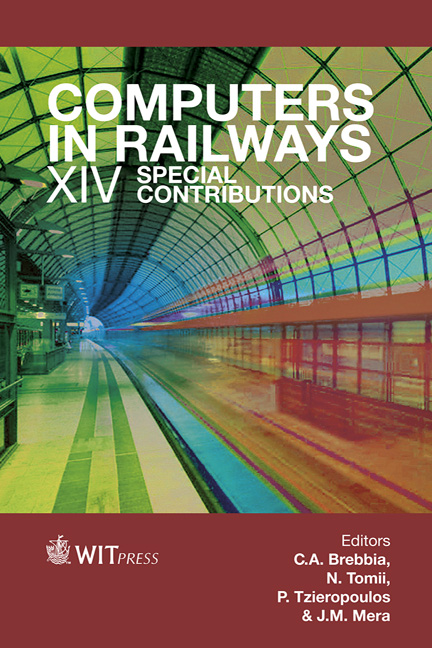An Integrated Platform For Energy-saving Operation In Urban Rail Transit
Price
Free (open access)
Transaction
Volume
155
Pages
12
Page Range
139 - 150
Published
2015
Size
586 kb
Paper DOI
10.2495/CRS140121
Copyright
WIT Press
Author(s)
X. M. Song, J. Xun, B. Ning, T. Tang, B. Wang
Abstract
As regenerative braking technology is widely used in urban rail transit system, there is an interest to find an optimization method for energy-saving train operation based on the information from traction power supply. To study such method, this paper introduces an integrated hardware-in-loop simulation platform, which has a model integrating train operation control and traction power supply. In this model, the train operation optimal control model provides train operation information for a traction power supply model, and the traction power supply model generates data of voltage and current based on the characteristics of traction power supply, which is needed by the train operation optimal strategy. Based on the model, an energy-saving optimal algorithm for train control is proposed. The algorithm adds third-rail voltage into inputs. When the third-rail voltage rises, the algorithm will judge whether nearby trains under control of the same substation meet the conditions to accelerate and will adjust train operation mode (accelerate) if possible to realize the maximum utilization of regenerative braking energy. In order to ensure schedule adherence, the proposed model adjusts running time in the next inter-station. The feasibility and effectiveness of the proposed method are verified on the integrated hardware-in-loop simulation platform based on field test of Yizhuang line, Beijing Subway. The result shows that the proposed algorithm has little effect on punctuality rate and it can save 7.34% on energy for traction at the most.
Keywords
train control, energy-saving, real-time control





